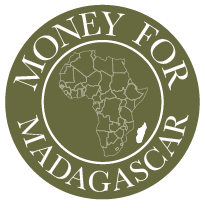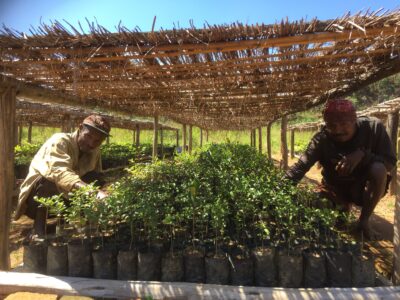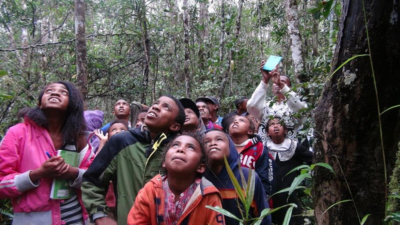What We Do
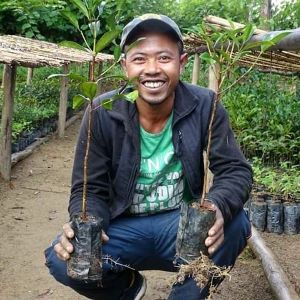
Having long recognised the interdependence of people and their environment, MfM supports local solutions that enable Malagasy people to take charge of their own livelihoods and future. Through education, training, and practical support, we enable farmers and forest dwellers to provide for their families, whilst protecting and restoring their fragile environment and rich biodiversity.
How We Protect Lemurs And Other Wildlife
Reforestation around Andasibe and Torotorofotsy with Association Mitsinjo
Since 2015, MfM has been working in partnership with Association Mitsinjo to gradually increase the area of restored forest around Andasibe at a rate of about 10ha per year. This has restored vital habitat for the forest’s wildlife.
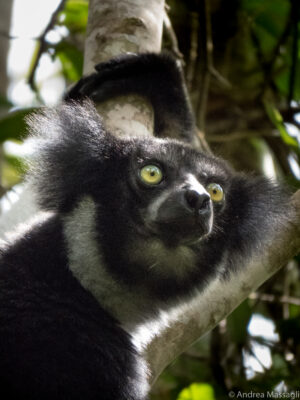
By using a mix of up to 60 carefully selected indigenous tree species, the Mitsinjo team harness the power of nature to complete the restoration process! By including a range of fast growing fruit trees, attractive to seed dispersers such as birds, fruit bats and lemurs, the Mitsinjo reforestation team ensure that wildlife is drawn to the replanted areas, bringing in seeds from other plants in their faeces and facilitating the return of the natural forest.
Restoration of natural forest is not a fast process but replanted areas have seen the return of key indicator species such as the Blue Coua and brown lemurs.
What Lemur Species We Protect
By planting corridors to join isolated fragments of primary forest, the reforestation project around Andasibe and Torotorofotsy is extending the habitat for many endangered species such as the Indri (Indri indri) lemur.
How We Support Local Communities
Reforestation work has provided vital employment opportunities for local people and environmental education has helped to raise awareness of the value of the forests.
MfM’s reforestation work with Mitsinjo has always considered the needs of the local population and has emphasised ensuring local employment in reforestation, protection and ecotourism. Funds in 2020 made it possible to embark on sustainable livelihoods development in the hamlets of Sahatay and Sahakoa, in the Torotorofotsy buffer zone.
Sustainable Livelihoods
Supporting the development of sustainable livelihoods in these isolated communities is vital for the long-term success of Mitsinjo’s conservation and restoration efforts. 90% of the population living around the Torotorofotsy Protected Area are extremely poor and heavily dependent on the forest and wetland to meet their basic needs. Away from the eco-tourism hub of Andasibe village, they see less of the obvious benefits of keeping the forest intact. However, without their support for forest restoration and conservation, unsustainable subsistence agriculture, wildlife poaching and illegal logging will continue unabated, transforming this unique ecosystem into rice fields and destroying its rich biodiversity.
We urgently want to scale up the pace of this important work and to increase investment in both reforestation and strengthening livelihoods as a long-term strategy to restore and protect the forest.
Betampona Reserve
In Betampona we are working with our partner SAF to offer people living around the Special Rainforest Reserve practical alternatives to deforestation and wildlife poaching. By providing training, tools and long term technical support, we enable local families to improve food security and increase income whilst protecting precious wildlife habitats.
MfM takes a long-term approach to supporting families living around the Betampona special rainforest reserve. For over 30 years, MfM has focused on helping people to overcome their problems, to value and protect the land and to live off it in a sustainable way.
The project, which began in 5 communities surrounding the reserve, has now spread to 100 communities covering over 600km2.Thousands of subsistence farming families have been able to sustainably improve their lives and build a better future for their children, which is a key factor in keeping the Betampona rainforest in tact.
One of the secrets of the Betampona project’s success is the long term, people-centered approach taken by SAF’s committed team of technicians and community workers. The dedicated staff team has established deep respect and trust with the villagers. Their long-term commitment and support mean that benefits are durable and far-reaching. Instead of cutting down new forest every year to try to meet their basic needs, forest communities invest in infrastructures such as rice fields, dams, ponds and animal pens, to get more out of their existing land. Instead of poaching lemurs, farmers are able to improve their diets with fish and poultry. By planting productive trees farmers gain a stake in the forest and are motivated to value and protect it.

